Simulations Publications, Inc. (SPI) was an American publisher of board wargames and related magazines, particularly its flagship Strategy & Tactics, in the 1970s and early 1980s. It produced an enormous number of games and introduced innovative practices, changing the course of the wargaming hobby in its bid to take control of the hobby away from then-dominant Avalon Hill. SPI ran out of cash in early 1982 when TSR called in a loan secured by SPI's assets. TSR began selling SPI's inventory in 1982, but later acquired the company's trademarks and copyrights in 1983 and continued a form of the operation until 1987.

PanzerBlitz is a tactical-scale board wargame published by Avalon Hill in 1970 that simulates armored combat set on the Eastern Front of World War II. The game, which was the most popular board wargame of the 1970s, is notable for being the first true board-based tactical-level, commercially available conflict simulation wargame. It also pioneered several concepts that would become industry standards.
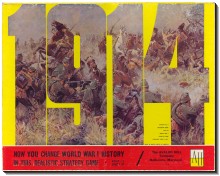
1914 is a board wargame published by Avalon Hill in 1968 that simulates the first few months of World War I on the Western Front.

Battle of the Bulge is a board wargame published by Avalon Hill (AH) in 1965 that simulates the World War II battle of the same name. General Anthony McAuliffe (ret.), who had been commanding officer at Bastogne during the Battle of the Bulge, was a consultant during the game's development. The game proved popular and sold over 120,000 copies, but was dogged by criticisms of historical inaccuracies, and was finally replaced by a completely new edition in 1981. A third edition in 1991 was released as part of the Smithsonian American History Series.

Tactical wargames are a type of wargame that models military conflict at a tactical level, i.e. units range from individual vehicles and squads to platoons or companies. These units are rated based on types and ranges of individual weaponry. The first tactical wargames were played as miniatures, extended to board games, and they are now also enjoyed as video games.
War In The East: The Russo-German Conflict, 1941-45 is a board game published in 1974 by Simulations Publications.

Stalingrad is a strategic-level board wargame published by Avalon Hill in 1963 that simulates the first 24 months of the war between Germany and the Soviet Union during World War II. As one of the first board wargames it was extensively played and discussed during the early years of the wargaming hobby.

Panzergruppe Guderian is a board wargame published by Simulations Publications, Inc. in 1976 that simulates the 1941 Battle of Smolensk during World War II.
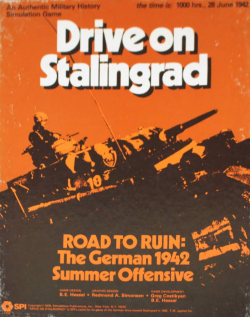
Drive on Stalingrad: Battle for Southern Russia Game is a board wargame originally published by Simulations Publications, Inc. (SPI) in 1977 that simulates Germany's 1942 campaign in Russia during the Second World War.
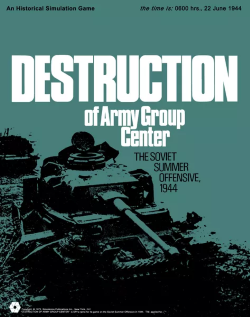
Destruction of Army Group Center, subtitled "The Soviet Summer Offensive, 1944" and often shortened to DAGC, is a board wargame published by Simulations Publications Inc. (SPI) in 1973 that simulates Operation Bagration, the June 1944 Soviet offensive during World War II that shattered the German line and marked the start of Germany's long retreat back to Berlin and the end of the war.

Kursk: Operation Zitadelle is a board wargame published by Simulations Publications Inc. (SPI) in 1971. It was the first wargame to simulate the Battle of Kursk, the large tank battle during World War II.

Korea: The Mobile War is a board wargame published by Simulations Publications Inc. (SPI) in 1969 that simulates the Korean War.
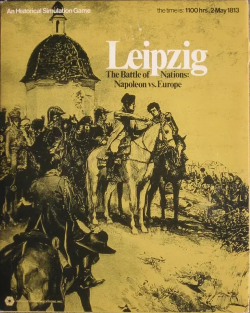
Leipzig: The Battle of Nations, subtitled "Napoleon vs. Europe", is a board wargame published by Simulations Publications Inc. (SPI) in 1969 that simulates the 1813 campaign of Napoleon in central Europe, including the Battle of Leipzig. The game was one of the first Napoleonic board wargames, and a number of innovative rules such as the effect of individual leaders on combat were adopted by other wargame publishers.
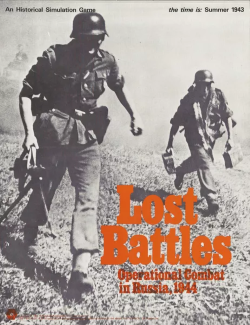
Lost Battles: Operational Combat in Russia is a board wargame published by Simulations Publications Inc. (SPI) in 1971 that simulates hypothetical combat situations set in the Soviet Union during World War II.

The Moscow Campaign, subtitled "Strike and Counterstrike Russia", is a board wargame published by Simulations Publications Inc. (SPI) in 1972 that simulates combat near Moscow during World War II.

1918, subtitled "Operation Michel: March 21–30, Germany's Last Chance in the West", is a board wargame published by Simulations Publications Inc. (SPI) in 1970 that simulates Operation Michael, the final German offensive on the Western Front in which they tried to win the war or at least force peace talks before American soldiers started to arrive on the Western Front in force. The game was well received by critics, but did not sell well.

East Front is a board wargame published by The Control Box, Inc. in 1976 that simulates combat on the Russo-German Front during World War II. The game had unusual hexagonal-shaped counters rather than the more traditional square counters.

Tannenberg is a board wargame published by Simulations Publications Inc. (SPI) in 1969 that simulates the Battle of Tannenberg on World War I's Eastern Front. The game was created by game designer Jim Dunnigan as a companion piece for Avalon Hill's Western Front wargame 1914, also designed by Dunnigan. Although Tannenberg could be played as a standalone game, rules were included to combine it and 1914 into a two-front wargame. Nine years later, Tannenberg was completely revised and republished as a free pull-out game in SPI's house magazine Strategy & Tactics to promote SPI's upcoming release of The Great War in the East. The second edition was also sold as a standalone game.

Normandy: The Invasion of Europe 1944 is a board wargame published by Simulations Publications Inc. (SPI) in 1969 that simulates the D-Day landings on the beaches of Normandy, and the six days that followed as the German forces tried to prevent an Allied break-out. A second revised edition was published in 1971

















